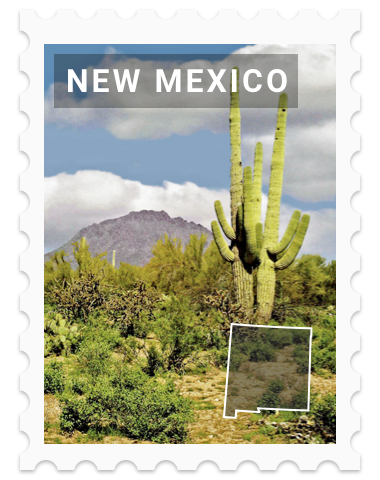New Mexico
Discover New Mexico

Capital
Santa Fe
Statehood
January 6, 1912
New Mexico's past is a tale of ancient peoples, including the Puebloans, Apache, and Navajo, who have called this region home for millennia. The ruins of their ancestral villages, like those at Chaco Canyon and Bandelier National Monument, provide a window into their remarkable cultures.
In the 16th century, Spanish explorers, including Francisco Vásquez de Coronado, ventured into the territory, seeking the legendary Seven Cities of Gold. This era of exploration left an indelible mark on New Mexico, with Spanish missions and adobe architecture still prevalent today.
The 19th century brought further cultural blending as New Mexico became part of the United States after the Mexican-American War. It was a time when the Santa Fe Trail opened the region to trade and travel, while the arrival of the railroad in the late 1800s connected New Mexico to the rest of the nation.
New Mexico's history is also marked by the atomic age, with the Manhattan Project leading to the creation of the first atomic bomb. The impact of this era is evident at the Bradbury Science Museum in Los Alamos and the Trinity Site, where the first nuclear explosion occurred.
For explorers seeking to delve into New Mexico's history, a visit to Santa Fe's historic plaza, lined with adobe buildings and filled with art and culture, is a must. Also, exploring the ancient petroglyphs at Petroglyph National Monument offers a glimpse into the region's indigenous heritage.
Source ChatGPT
Major Airport
Albuquerque International Sunport

Elevation
1,632 m
Opened
1939
Runways
3






